If you’ve foraged or read about turkey tail mushrooms, you’ve probably heard of the false turkey tail, which is a very close lookalike. It seems, though, that the name false turkey tail has been bandied about a bit without a lot of scrutiny. It’s likely that whenever someone encounters a turkey tail lookalike, they immediately call it the false turkey tail as an easy means to differentiate it. And that led to a few separate (yet related) species gaining this common name.
There are three false turkey tail species in North America, possibly more. These three are the ones actually called false turkey tail. There are also a bunch of turkey tail lookalikes that aren’t called false turkey tail; they have other common names. But locally, or colloquially, they may also share the false turkey tail simply because they lookalike but are not (is that confusing enough?!). If you have a species you call false turkey tail and it’s not listed here, please let me know. Common names vary widely across regions, so maybe in your area, you call something else the false turkey tail?
In this guide, we’ll cover all three primary false turkey tail species and their lookalikes, some of which could easily qualify for the name false turkey tail themselves.
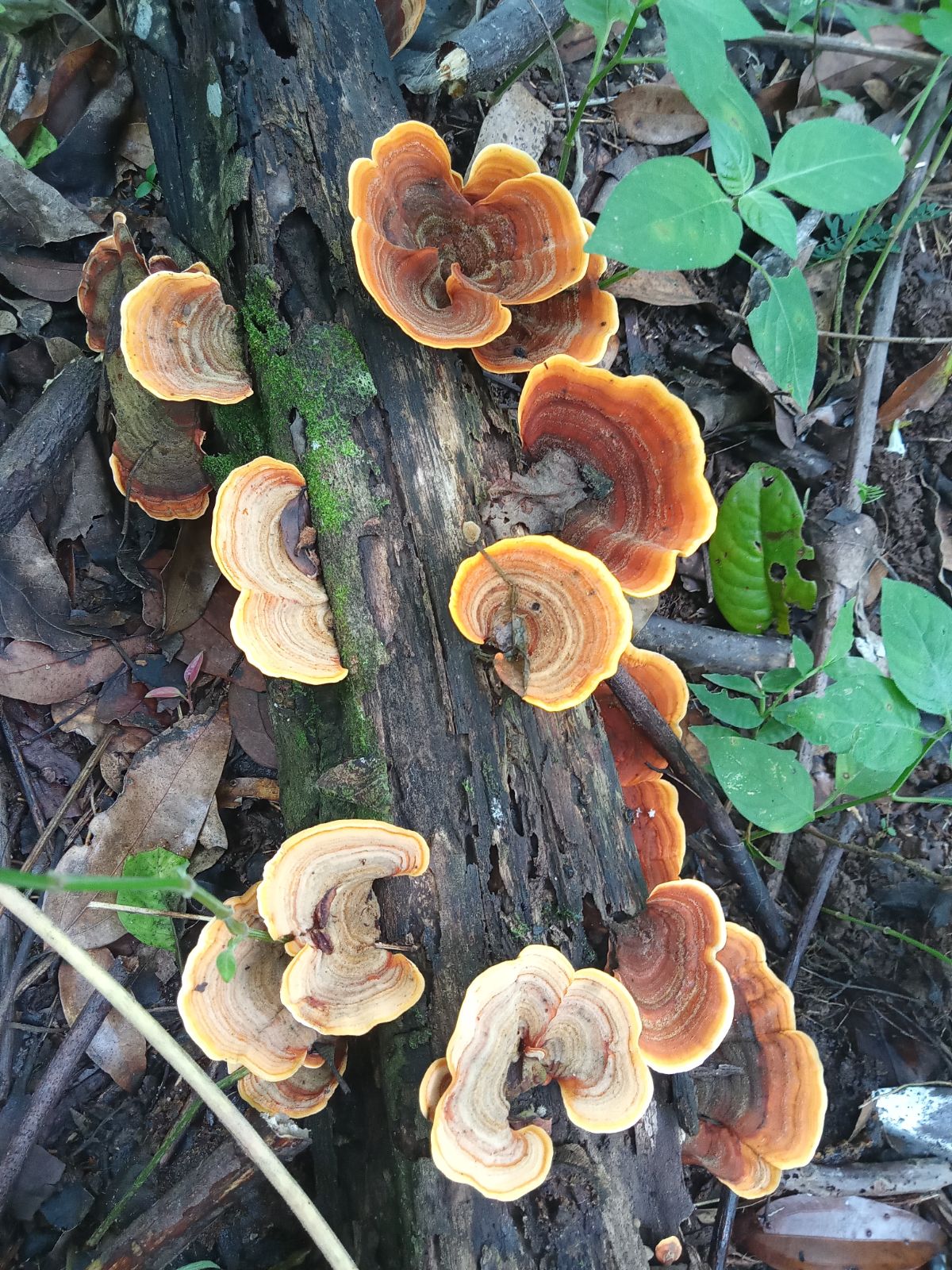
Jump to:
- Intro to False Turkey Tails
- False Turkey Tail Contender #1 – Stereum ostrea
- False Turkey Tail Contender #2 – Stereum hirsutum (group)
- False Turkey Tail Contender #3 – Stereum complicatum
- False Turkey Tail Vs. True Turkey Tail: How To Tell The Difference
- False Turkey Tail Lookalikes
- Potential Dangers of Mistaking the False Turkey Tail Mushrooms for the Real One
- Common Questions About False Turkey Tails
Intro to False Turkey Tails
The false turkey tail species all fall within the Stereum genus, which contains about 27 crust fungi species. These are crust fungi, meaning they do not have visible pores/gills/teeth or any other adaptations to the spore-producing surface. Instead, undersurface is simply smooth. The lower surface is usually colored similarly to the top, but it may have more muted colors and much fainter zonation.
Stereum are wood decay fungi that are found on deadwood or dead leaves. Sometimes, they are even found on living leaves. They are saprobic, feeding on dead and decaying wood and organic material.
The fun part about these three Stereum species is that they are hard to differentiate from each other. So, possibly to the casual mushroom forager or woods wanderer, knowing that they are actually three different species isn’t that useful. It’s just enough to know they are part of the false turkey tail family.
If you want to nerd out a little bit about naming and species boundaries, check out this article about Stereum in North America.
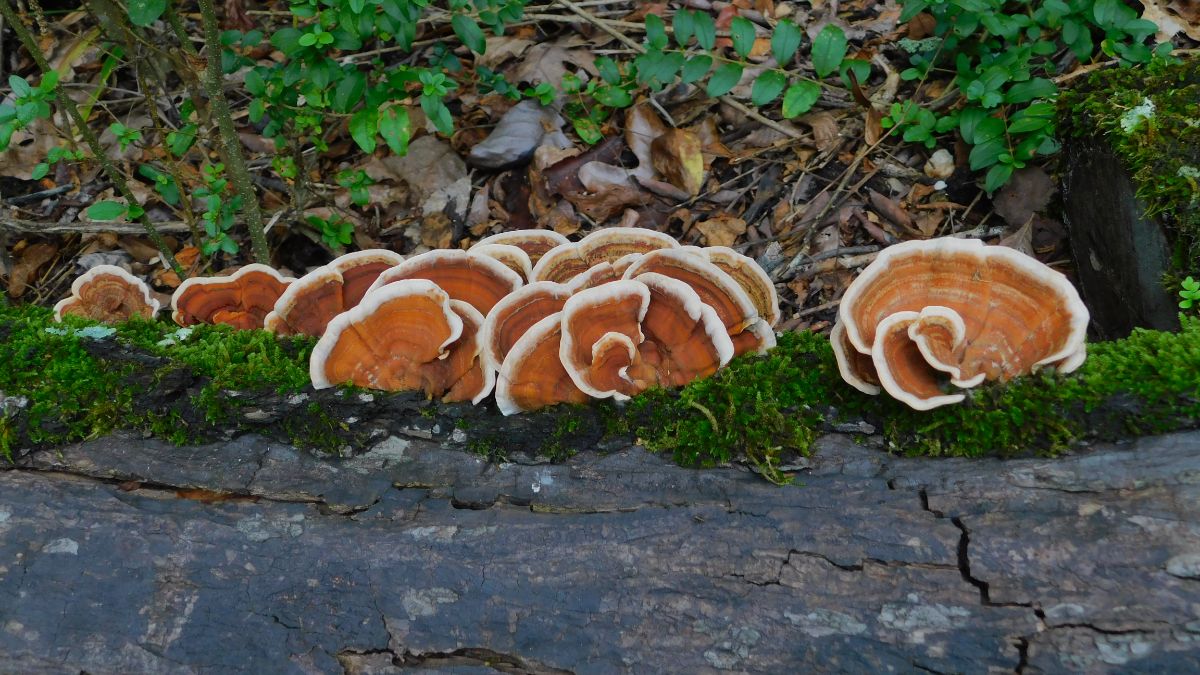
False Turkey Tail Contender #1 – Stereum ostrea
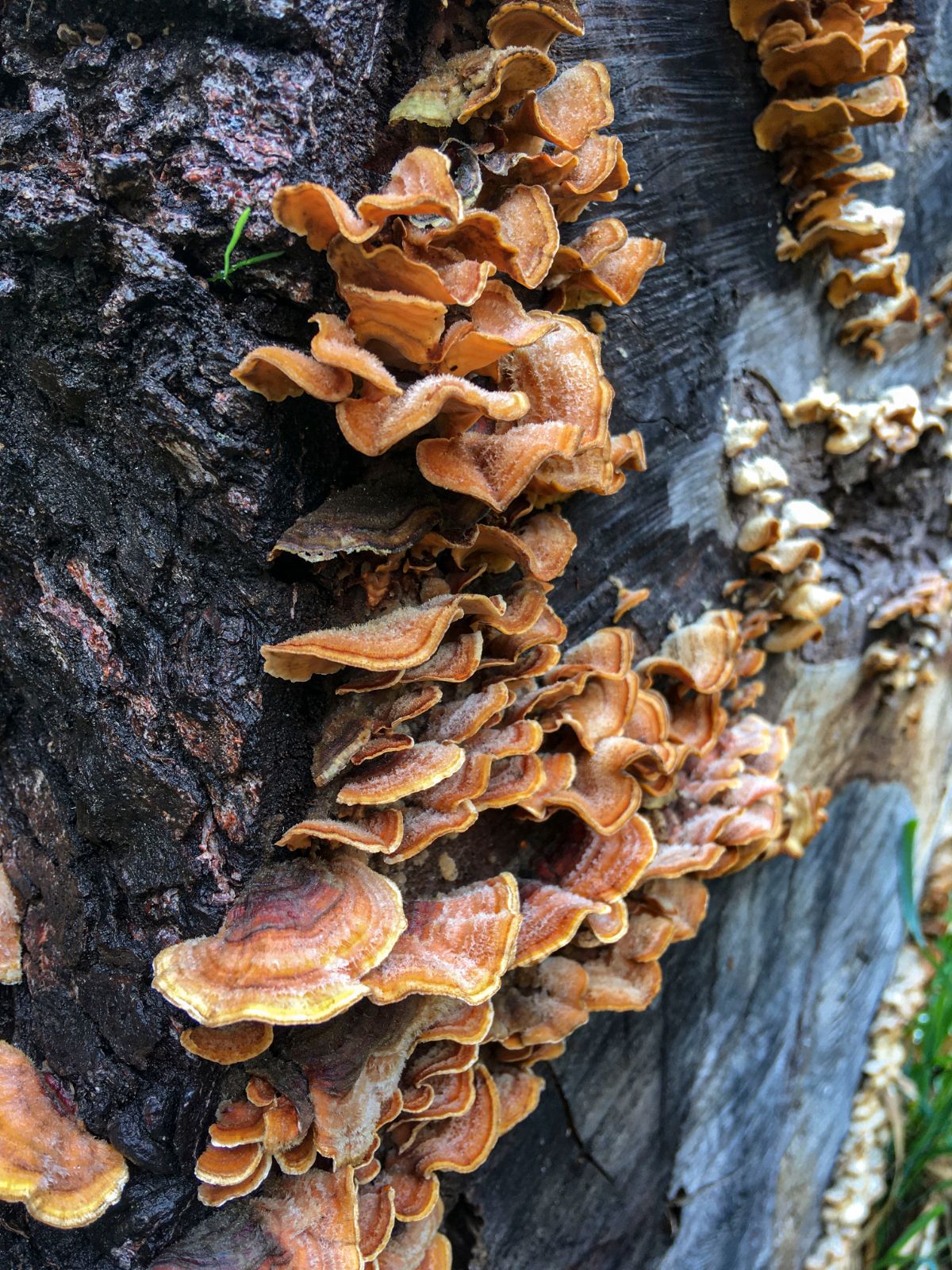
The mushroom that is most widely known as the false turkey tail is Stereum ostrea. It is a common sight in forests and woodlands and shares several physical similarities with the genuine turkey tail mushroom, making it a convincing doppelganger. The false turkey tail mushroom typically grows in overlapping clusters, forming a fan or shelf-like shape.
Its coloration varies from reddish-brown to orange, often showing off some pretty vibrant hues. Its species name, ‘Ostrea,’ is from the word ‘oyster’ and refers to the shell-like shape of its fruiting body. This species of false turkey tail is also known as golden curtain crust.
Stereum ostrea is a saprobic, white rot fungus belonging to the Stereaceae family. Its fruiting body is made up of large, layered groups of leathery, parchment-like brackets. These brackets have multicolored zones, ranging from brown and rust to orange and green. The cap of Stereum ostrea is semicircular or irregular in shape.
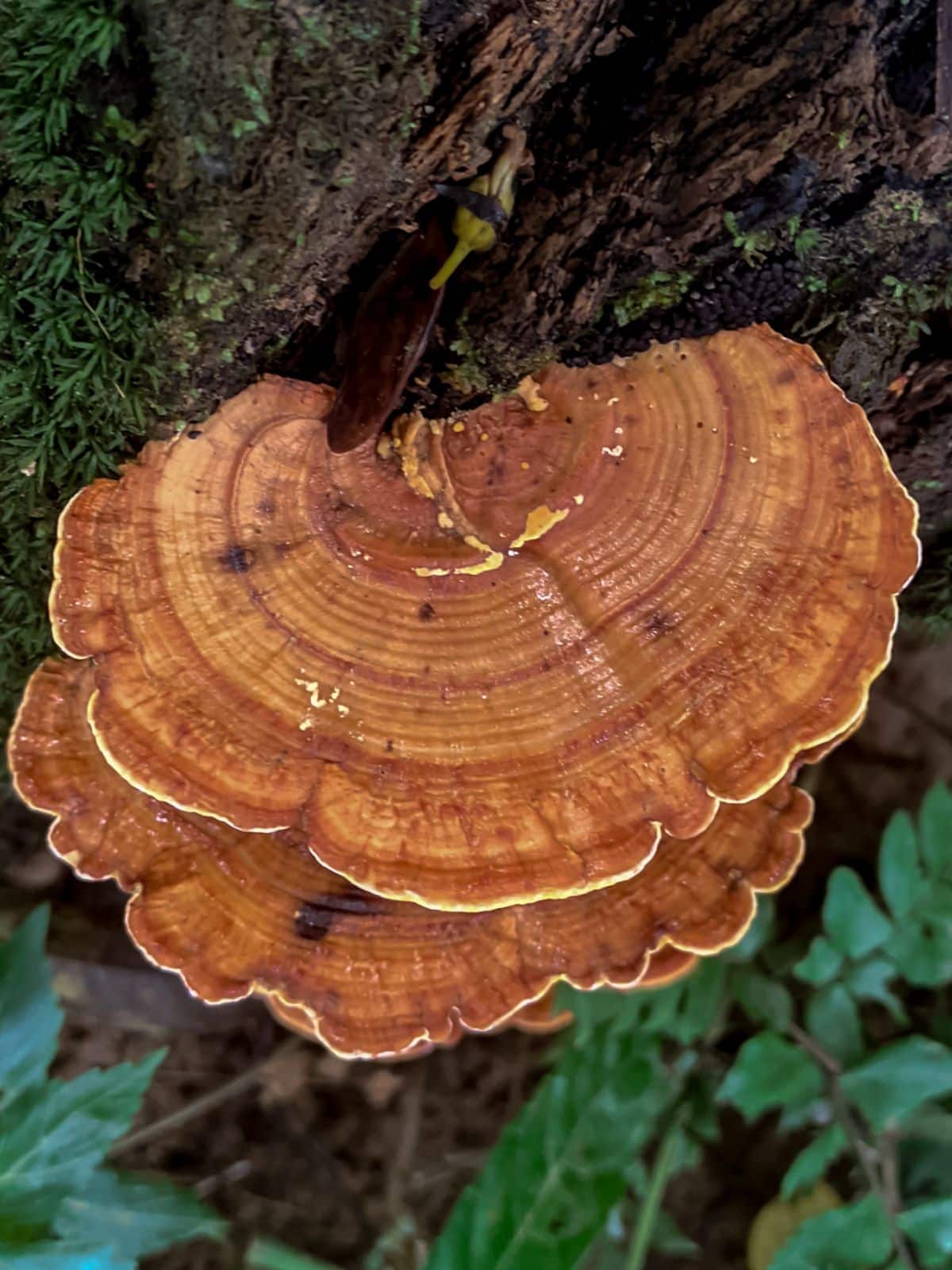
Stereum ostrea Identification
Season
This false turkey tail mushroom can be observed year-round, from spring to winter. It won’t be actively growing in winter, but mature fruiting bodies remain on trees for quite a long time in the right circumstances.
Habitat
Stereum ostrea is a saprobic fungus, meaning it obtains nutrients and energy by decomposing dead organic matter. This species thrives on decaying logs, stumps, and branches of deciduous trees, with a particular affinity for oak trees. It is common in North America and has a wide distribution.
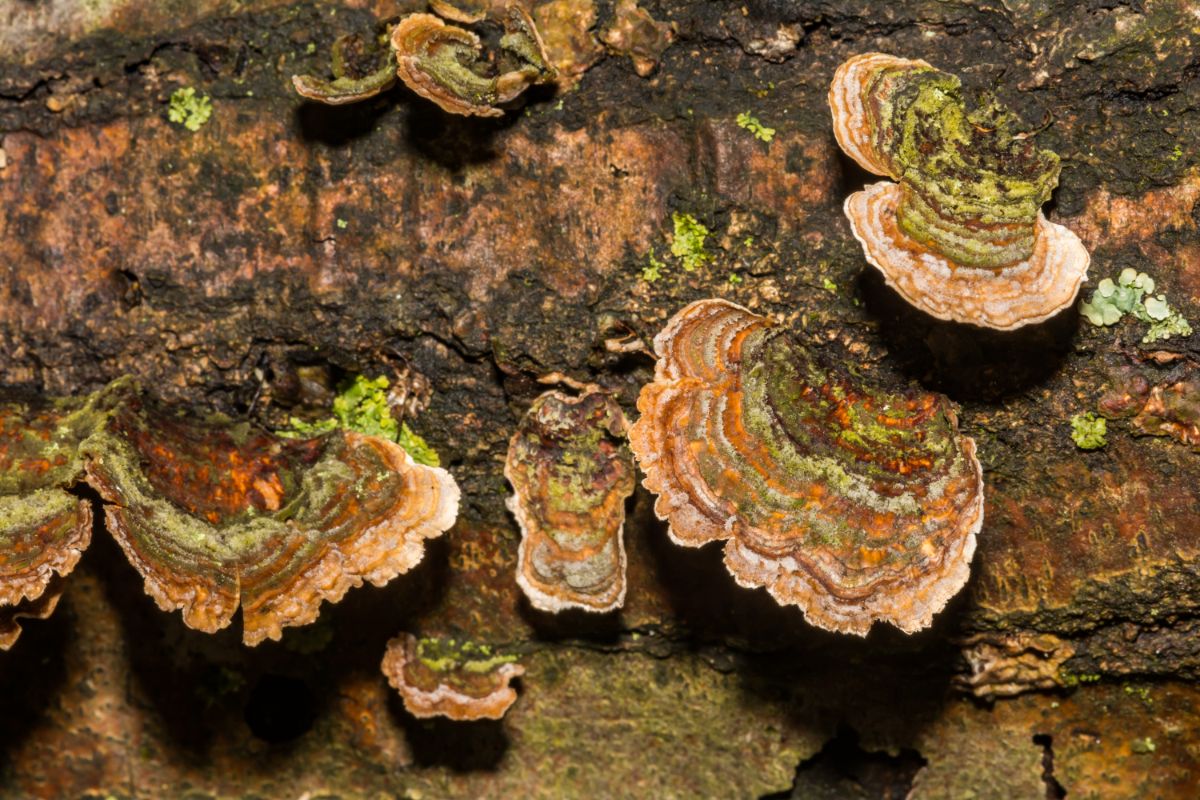
Cap
The cap of Stereum ostrea is semicircular, irregular, or fan-shaped. It has distinctive bands of browns, rusts, and sometimes even green hues. The texture of the cap is leathery and may appear hairy, especially when young. It is between ½ to 4 inches in width.
The cap often (more often than not) has green on it; this is from a green algae that uses the fungus as a means to get a better positioning in the world. When attached to Stereum ostrea, the algae is better able to photosynthesize. These two organisms live in harmony; neither takes anything from the other nutrient-wise
Pores
Stereum ostrea has smooth, brown, or whitish pores on its underside. This smooth surface is different than most polypores.
Stem
There is not a distinct stem. The fruiting body is directly attached to the substrate, such as decaying logs, stumps, and branches of deciduous trees.
Flesh and Odor
The flesh of Stereum ostrea is insubstantial and tough, rendering it inedible. It lacks any distinct odor.
Spore Print
Stereum ostrea produces a white spore print.
Edibility
This species is inedible, with a tough and leathery texture.
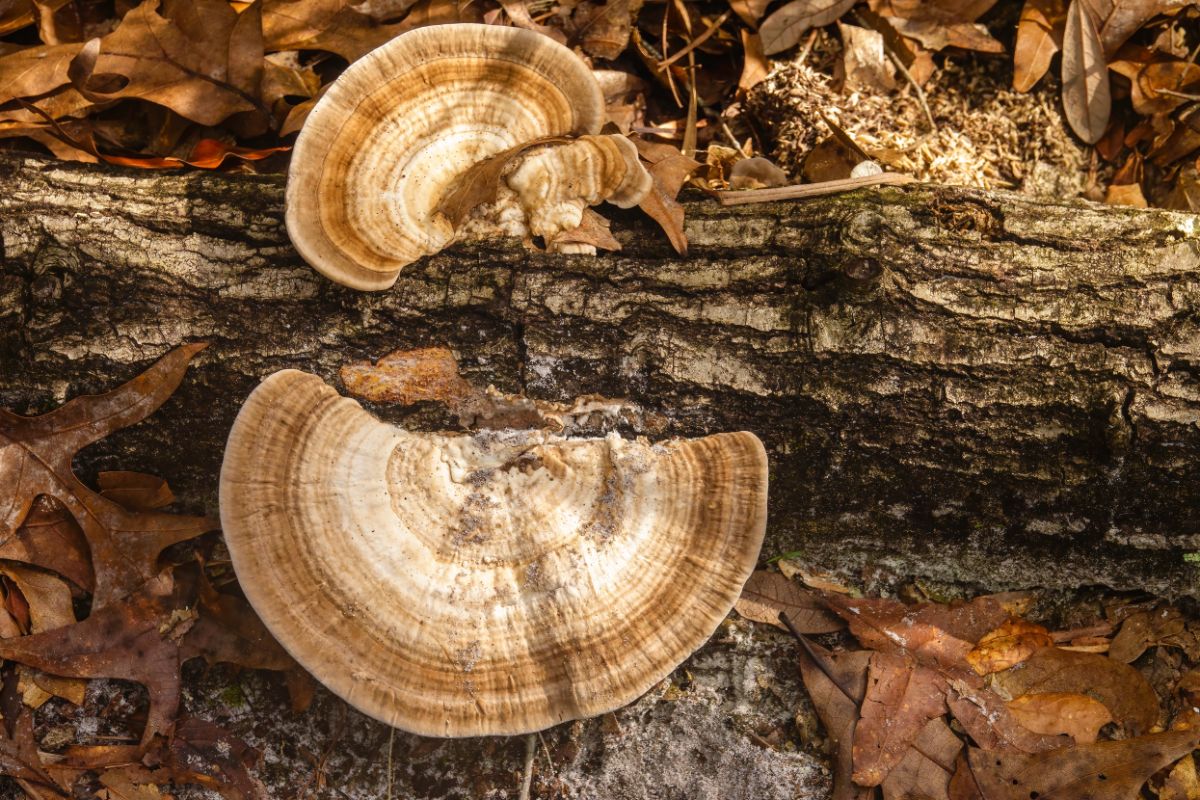
False Turkey Tail Contender #2 – Stereum hirsutum (group)
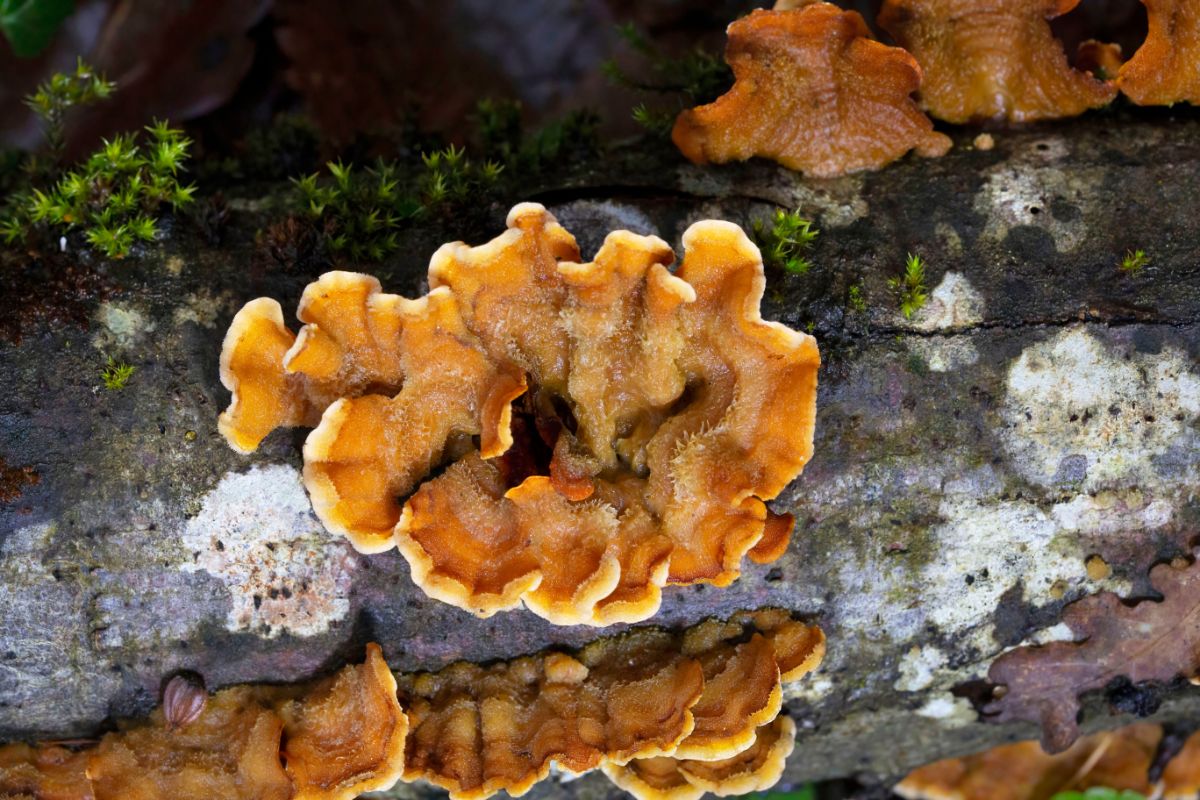
Stereum hirsutum is a relative of the first false turkey tail we described. It is also a white rot fungus. The name “hirsutum” refers to the hairy upper surface of the fungus, which is a distinctive feature of this species. It is also known as the hairy curtain crust fungus.
This species is smaller than S. ostrea (#1 on the list) and not as orange as S. complicatum (#3).
Stereum hirsutum Identification
Season
Like the first false turkey tail mushroom and true turkey tails, this species can be observed year-round, from spring to winter. It won’t be actively growing in winter, but mature fruiting bodies remain on trees for quite a long time in the right circumstances.
Habitat
Stereum hirsutum is a saprobic fungus, meaning it obtains nutrients by decomposing dead organic matter. It is commonly found growing on the dead wood of hardwood trees, especially oaks. This mushroom tends to form overlapping shelves, often from gaps in the bark or wounds on the tree.
This crust fungus is widely distributed across North America, as well as Europe and Australia.
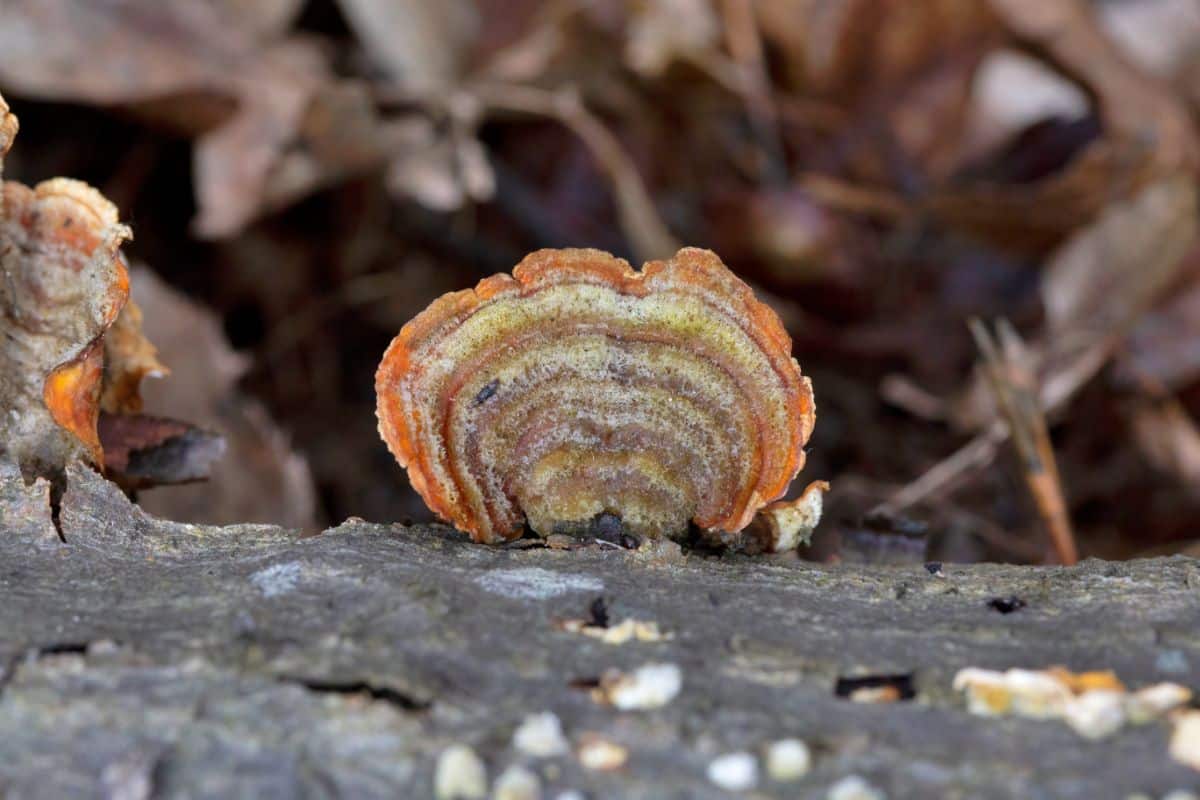
Cap
The cap of Stereum hirsutum is shelf-like and ranges from 0.5 to 2 inches wide. As the mushroom matures, multiple caps may fuse together, forming larger structures up to 8 inches long. In fact, it is very common to see them fused. The upper surface of the cap is hairy and wavy around the edges. The colors range from orange-brown, yellow-brown, and grayish-brown. The hairs densely cover the surface, giving it a distinct texture.
The cap commonly has green on it; this is from a green algae that uses the fungus as a means to get a better positioning in the world. When attached to the crust fungus, the algae is better able to photosynthesize. These two organisms live in harmony; neither takes anything from the other nutrient-wise.
This species is smaller than Stereum ostrea (described above)
Pores
The pore surface is smooth and ranges from yellow to brown to reddish-tan.
Stem
There is no stem. Instead, it forms overlapping shelves directly on the substrate.
Flesh and Odor
The flesh of Stereum hirsutum is relatively thin. The flesh is pliant and flexible when young, but it becomes tough and leathery with age. It does not have a distinctive odor.
Spore Print
The spore print is white.
Edibility
This species is inedible, with a tough and leathery texture.
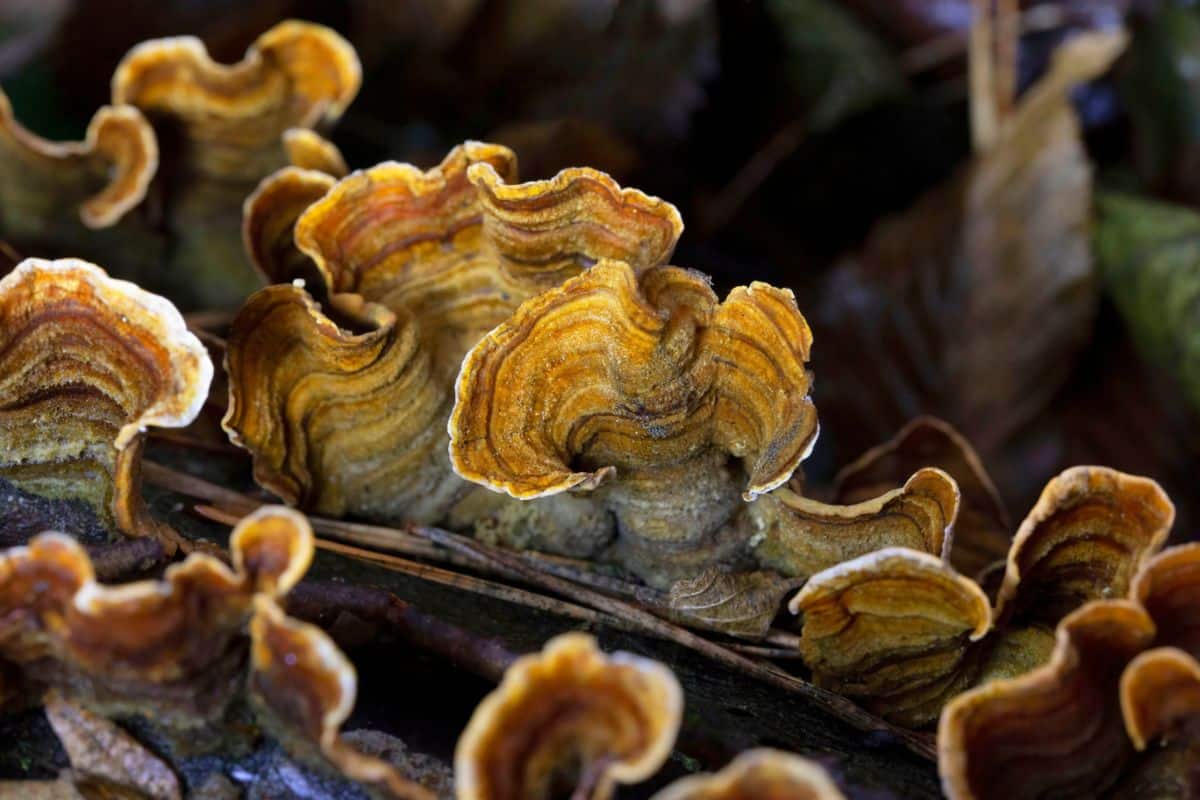
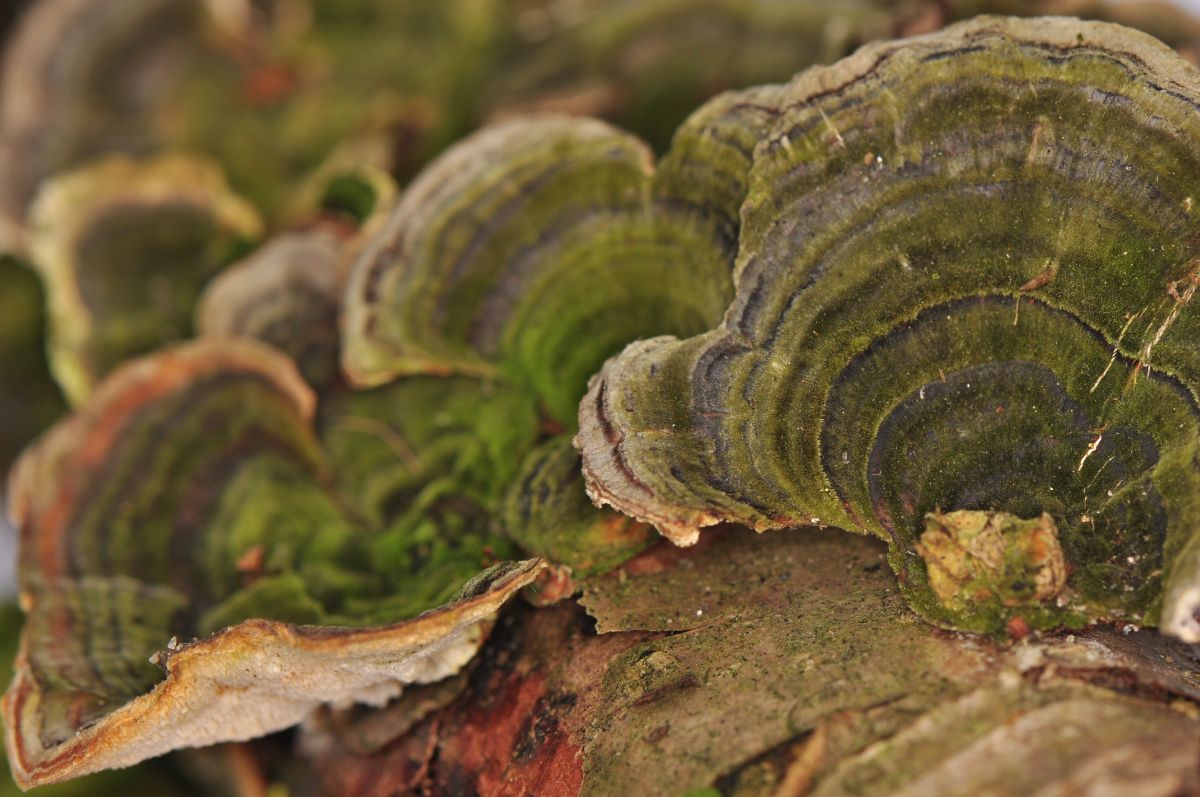
False Turkey Tail Contender #3 – Stereum complicatum
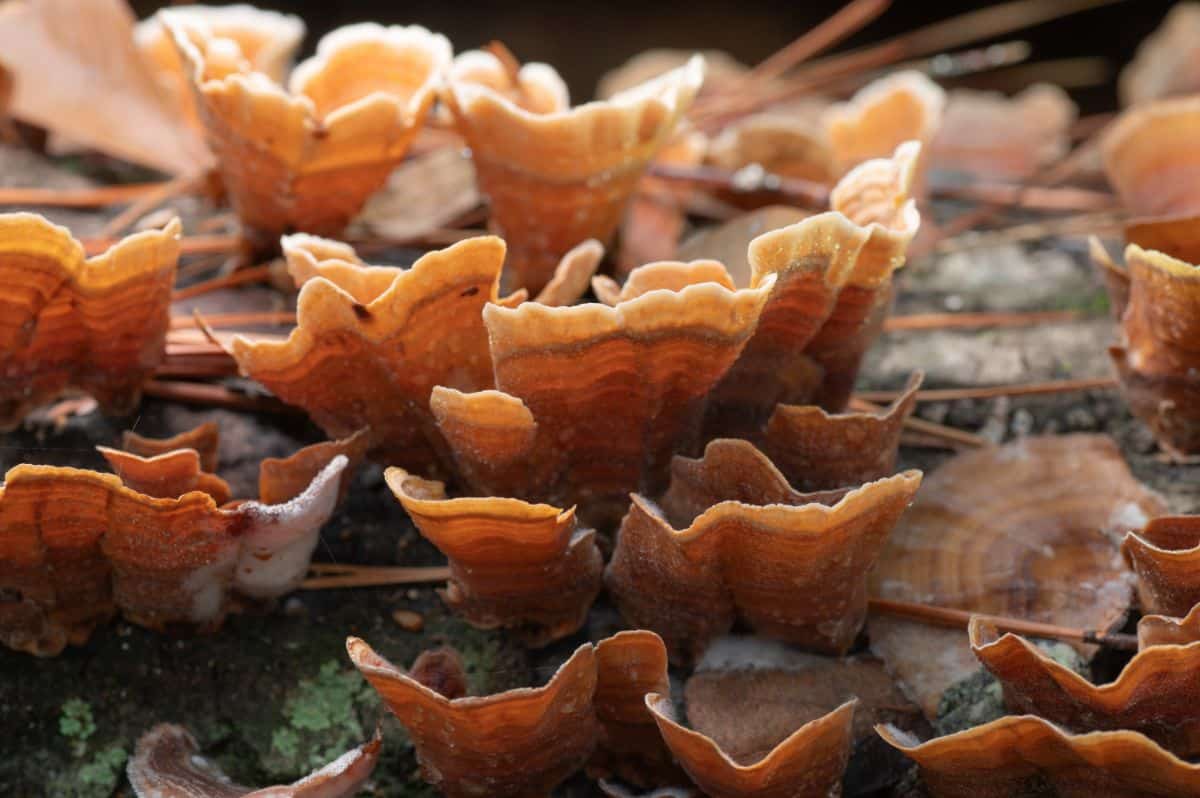
This Stereum species, commonly known as the crowded parchment fungi, may or may not be its own species [it’s complicated ;-)]. Some guides treat it independently, while others include it in the Stereum hirsutum group (#2 on our list). We are treating it separately for no other reason than that we think it looks different, even if that means it just has different growth some of the time. A synonym for this species is Stereum rameale.
Stereum complicatum Identification
Season
This crust fungi can be found year round.
Habitat
Stereum complicatum is a saprobic fungus that thrives on the dead wood of hardwood trees, particularly oaks. It can be found densely growing in groups, often emerging from gaps in the bark. Stereum complicatum frequently serves as a host to algae and is sometimes parasitized by jelly fungi.
It is widespread across North America but seemingly absent in the Rocky Mountains. S. complicatum also grows in parts of Europe, the Mediterranean, and Asia.
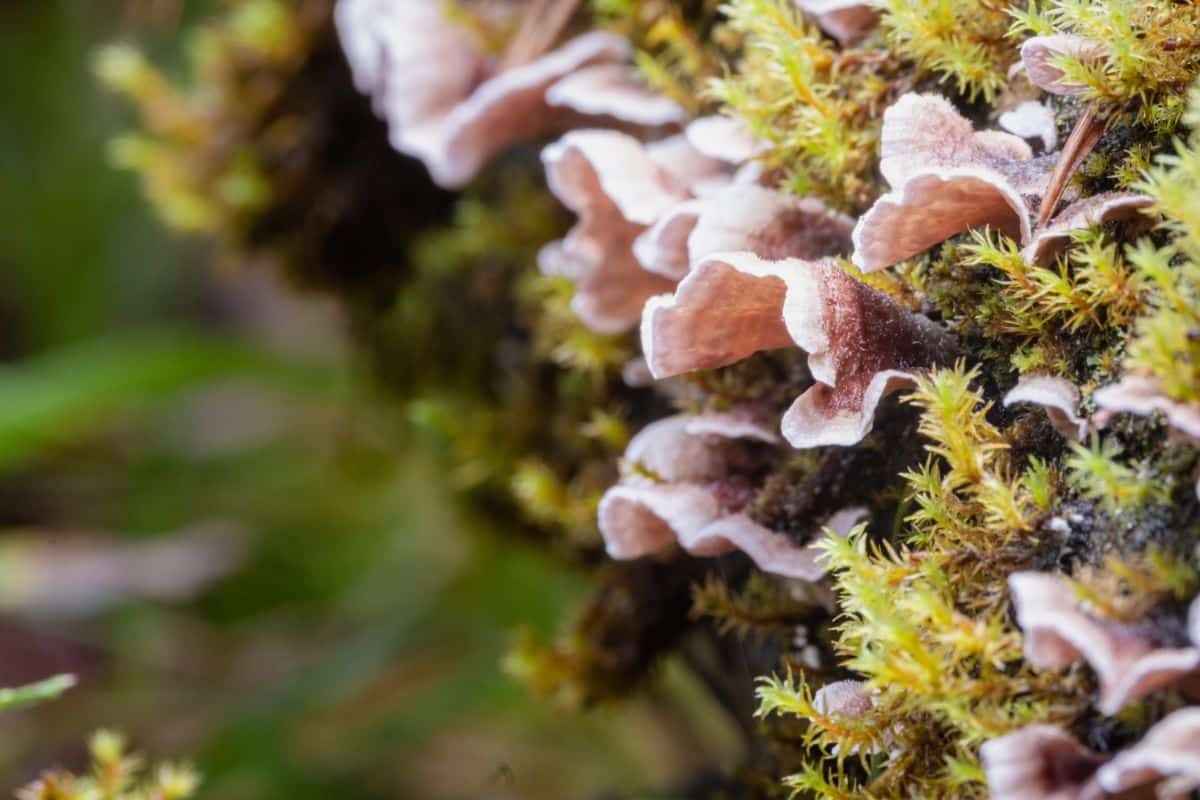
Cap
The caps are shelf-like and usually no more than 1” wide. They are often fused together, creating a crowded appearance. It might be difficult to make out actual “caps.” The fungus spreads and fuses so many times it looks like something smeared on the wood.
The upper surface of the caps is velvety, hairy, or might be nearly smooth in age. Cap colors vary from tan to orange-brown, pinkish, or cinnamon, with distinct concentric zones of color and texture. The edges of the young crusts may be fringed with tiny eyelash-like hairs, which differentiates it from Stereum hirsutum.
Pores
The undersurface of Stereum complicatum is smooth and a vibrant orange color. This characteristic coloring sets it apart from other species within the Stereum genus.
Stem
There is no distinctive stem. The fungus attaches directly to the wood.
Flesh and Odor
The flesh is thin and tough. It doesn’t have a distinctive odor.
Spore Print
The spore print is white.
Edibility
This species is inedible, with a tough and leathery texture.
False Turkey Tail Vs. True Turkey Tail: How To Tell The Difference
Primary differences between Stereum species, the false turkey tails, and Trametes versicolor, the true turkey tail:
- The pore surface of Stereum species are totally smooth with no visible pores. They look more like a smooth, blank sheet of paper. Turkey tail pores are like a thin sponge, with visible upraised pores.
- The pore surface of Stereum are usually brown or reddish, but they may also be whitish or grayish. Turkey tail pores are always white.
- True turkey tail caps are primarily grayish or dull brownish, with dark blue or purple zonal coloring. They do not have the vibrant orange or reddish brown of Stereum species. However, this can get complicated since cap colors can vary widely between all species. And Stereum species coloring fades with age, often turning rather gray and dull.

False Turkey Tail Lookalikes
Bleeding Oak Crust (Stereum gausapatum)
This could be in the false turkey tail collection because it looks quite similar. However, it has a crucial difference that is very distinctive. The pore surface is orange to yellow-brown and “bleeds” a dark red latex when scratched or cut. This Stereum species grows on oaks and is widespread across North America.
The only problem with differentiating the species happens when S. gausapatum gets old and dried out and loses its characteristic red bleeding. When it’s at this point, you probably need a microscope to tell this one apart from other Stereum species. The bleeding oak crust is usually included in the Stereum hirsutum group, meaning it is a form or variety of that fungus.
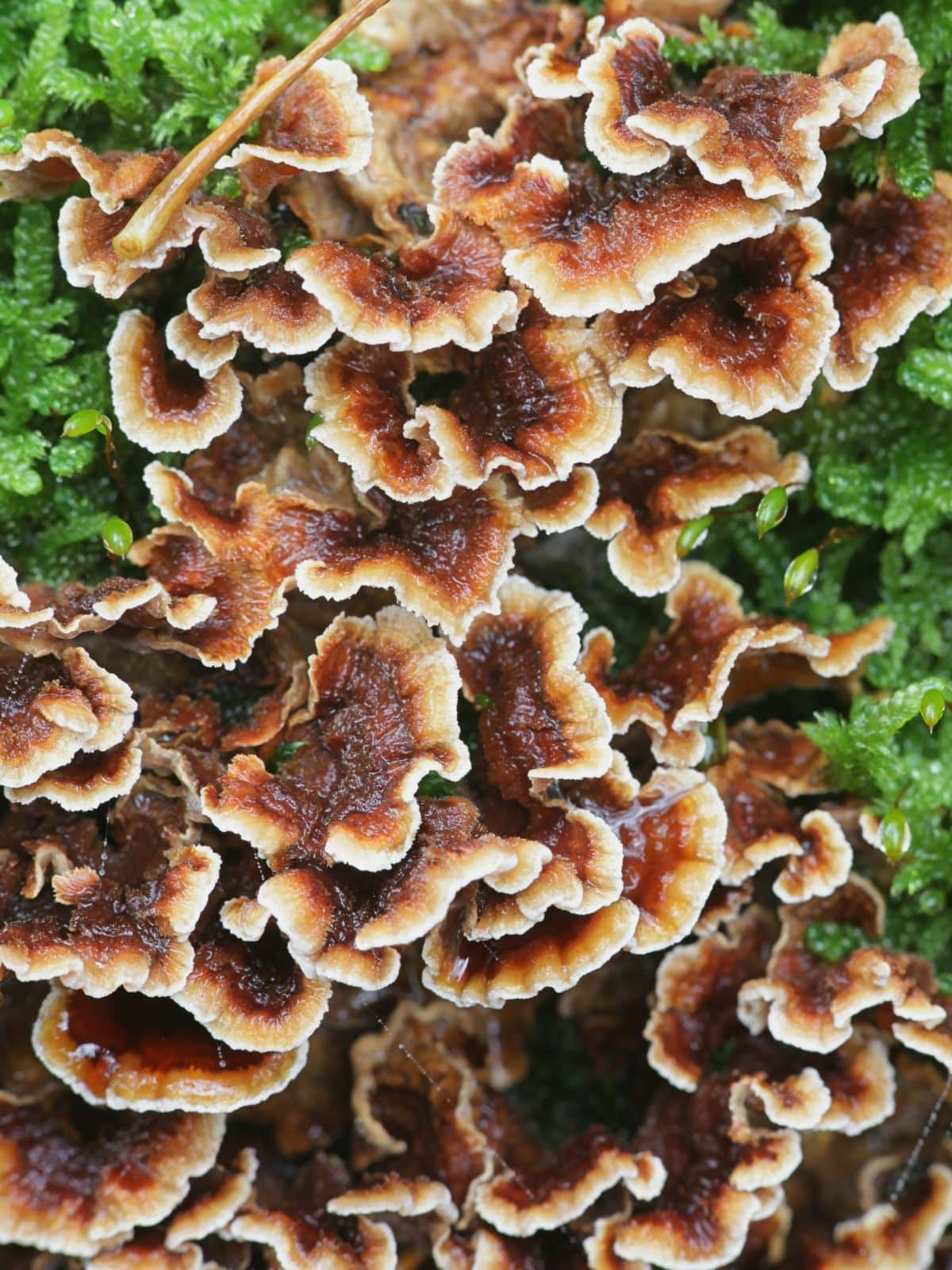
Bleeding Conifer Parchment (Stereum sanguinolentum)
This is another lookalike that “bleeds” when cut or scratched. As the name suggests, the bleeding conifer parchment occurs on conifer trees. This is good because otherwise, it looks identical to the bleeding oak crust listed above; one grows on oaks, though, and this one grows on conifers.
This Stereum species is beige to dark brown with a lighter colored edge and is widespread across North America. It is easily distinguishable when it is young and it bleeds red when cut. With age, the latex liquid dries out and it might not show anything when cut. It also tends to look more drab at this point, which makes it look more like turkey tail.
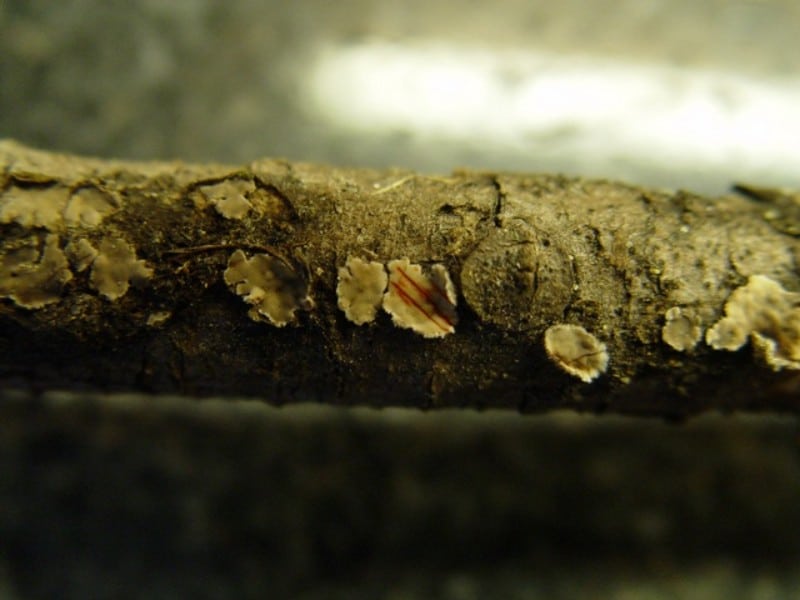
Violet-Toothed Polypore (Trichaptum biforme)
The violet toothed polypore lives right up to its common name. From the top it looks very much like a turkey tail. There are zones of coloring on the cap in grayish tones and it grows shelf-like on dead hardwood. However, once you turn it over, the truth is there. The pores on this species are a deep rich violet color. With age, they may fade to grayish violet, but they are still distinctively not like the other species.
The twin to this species is Trichaptum abietinum, which looks basically identical except it grows on conifers.


Potential Dangers of Mistaking the False Turkey Tail Mushrooms for the Real One
While false turkey tail mushrooms are not toxic, mistaking them for real turkey tail mushrooms is problematic. If you intend to harvest mushrooms for medicinal or culinary purposes, using the false turkey tail mushroom instead of the genuine one could result in a less effective or less flavorful outcome. False turkey tail mushrooms lack the scientific research and proven benefits associated with the actual turkey tail mushroom.
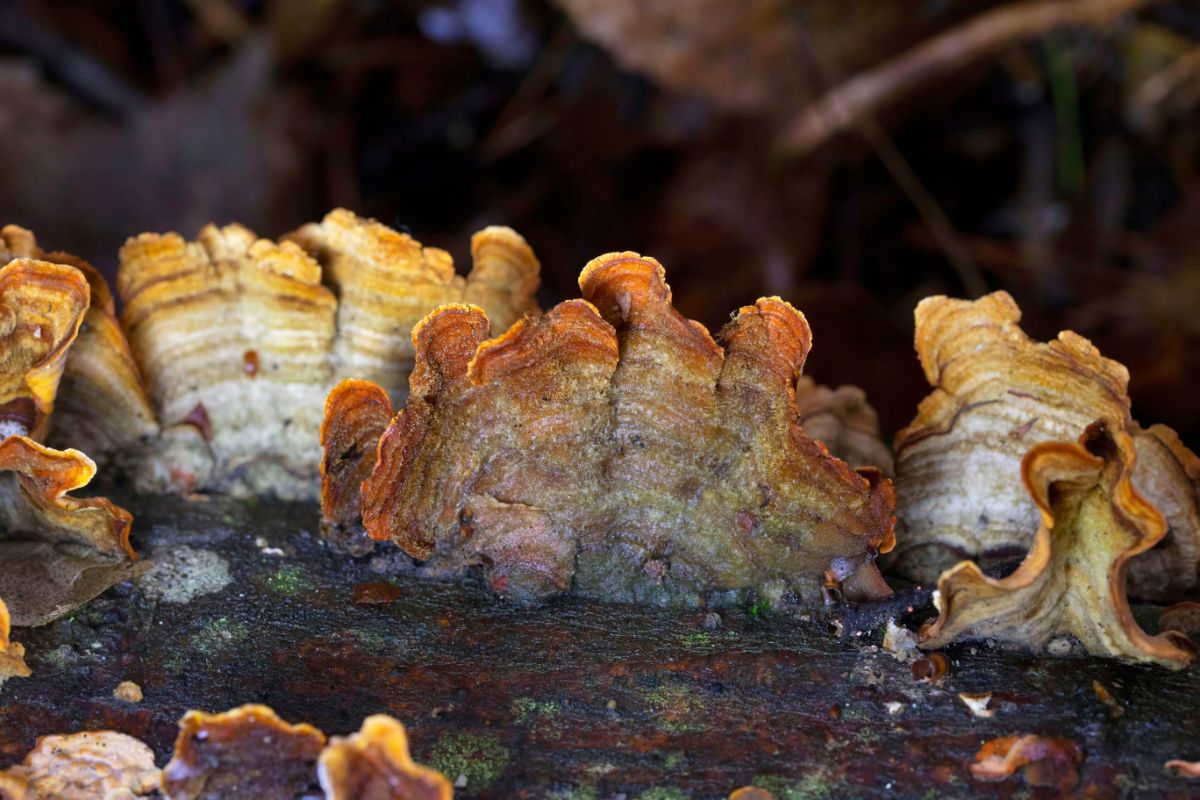
Common Questions About False Turkey Tails
Do false turkey tail fungi have medicinal properties?
Currently, there is limited research on the medicinal properties of Stereum ostrea and the other false turkey tail species.






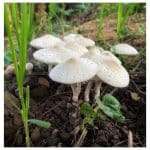
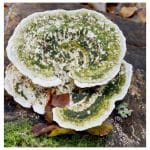
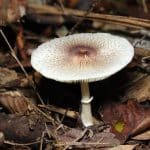
Susan says
I have these real turkey tail mushrooms growing on the dead trunks of a pink dogwood tree. They started growing last year. We had cut the tree to four foot length s about15 years ago and left the tree stumps in he ground. Last year they were totally dead no growing little shoots anymore. Then these started growing up the trunks. I now have a lot of them on these trunks. My neighbour did a close up Google identifier and they were the real turkey tail so I want to make some tea to drink as I have a lot of health problems.
Jenny says
That’s great! I’d suggest using more than one ID tool, google is not always right, especially with the small bracket mushrooms. They make a great, earthy tea 🙂